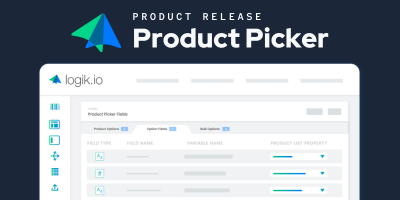The more we know about buyer preferences, market trends and the like, the better we can evolve to fulfill our mission – to help your business sell more, sell faster, and maintain less. Expanding and improving buyer experience is deeply intertwined with those goals, as they reap the ultimate benefit of a streamlined, innovative and dynamic system with which they can interface.
Today, we’re here to pull back the curtain on one of our own key CPQ features, an exciting new launch that we call Sets. They’re small in title, but big in impact.
A wildly valuable addition to the standard configuration process, the presence of Sets in Logik.io’s configuration solution directly supports each of the value propositions that drive Logik.io’s core mission.
Sets allow you to:
- Leverage re-usability of pre-existing rules and fields, accommodating wider use cases to sell more
- Mark a shorter time-to-value as compared to explicit rule definition, helping sell faster
- Require lower technical knowledge to implement and scale, meaning less to maintain
But, what exactly is a Set, and just why does it add so much value to the configuration process as a whole? Allow us….
What Are Sets?
All CPQ systems are based on a foundation of product knowledge and customized fields, allowing for a proper configure, price, quote experience. Logik.io’s Sr. Director of Product Management, Chris Haussler, explains that Sets within such systems “allow the administrator to group a ‘set’ of fields, replicate them a number of times, and present the inputs to the end user in a matrix format.”
In other words, Sets accommodate a level of input replication that lessens the manual data requirements during configuration, and provides an easier-to-navigate experience for the end user.
Administrators supporting Sets also have the capacity to layer rules and relationships across fields, as well as apply aggregate functions to perform calculations within the set records themselves to preserve time and energy from start to finish.
And all of this comes without scripting. The CPQ status quo heavily relies on scripting, uniquely written to address the most specific of scenarios. With a more modular style of setup, Logik.io Sets diverges from these scripting requirements. Logik.io’s field-rule-Set record relationship structure ensures non-technical administrators are capable of building and maintaining Sets in an optimal buyside configuration experience.
Looking at the two main camps of configurators on the market right now, product-based and attribute-based are carving out separate paths forward. When looking specifically at product-based configuration, though, there is no real equivalency to sets. The structure of their configuration simply does not accommodate it. Only systems built around attribute-based configuration, like that provided by Logik.io, have the bandwidth to accomplish such a goal.
With the digital market in such a state of rapid advancement, time becomes more and more precious for buyers and businesses alike. Not only does having less implementation-specific script and system maintenance reduce the immediate support needs, it also scales up far easier, helping you future-proof.
Front-line sales reps can easily ramp up to create their own configuration thanks to Sets, providing extra agency and closing power for those still focusing on direct channels, while online buyers can experience the benefits themselves.
When looking at industries like the high-tech sphere as an example, Haussler notes the point of being able to meet the velocity of change products are having with an out-of-the-box product is a major draw for eCommerce specifically.
Sets Across Industries
Sets are applicable to a wide cast of industries, and can be adapted to all sorts of use cases within those spheres. Haussler highlighted three main fields that could immediately benefit from the implementation of sets, and reasoning as to why:
High-tech: in which a set can represent a chassis of n-slots, each acting as a Set record where the user can provide server-specific configuration details
Software: if user needs to order multiple types of software, a Set can represent the contract type, number of licenses, term length, subscription method, etc. for each
Location-based hardware: Set records can collect site details, addresses and locational context for configured products, each to be installed in a distinct area (ie, ATMs, fuel pumps, elevators, building security components)
Case Study
Let’s imagine a software company that offers add-on implementation services for new accounts to ramp up as quickly and easily as possible. They can organize third-party implementation services that contract out specific roles, provide resources through their own salaried account managers in local areas, or accommodate custom implementation plans. In this environment, a Set could be constructed to include fields that outline the type of implementation available, a description of each, and price. These fields would present as a matrix to the buyer, who could then designate which option they’d like to proceed with.
Since rules and relationships can be layered across fields, certain selections made by the buyer can actually trigger additional Sets to present. The Sets and their included fields are then replicated as many times as there are total selections, leaving wide room for customization and manipulation.
If a buyer were looking to construct a hybrid implementation plan for offices across continents, they could select the custom implementation plan from the initial Set of offerings. From there, a secondary Set would present with further configurable options.
To build out the customized plan, the buyer could engage with interactive fields to select which architecture and engineering roles they’re looking to include – QA Managers, Integration Engineers, Product Managers, etc. For each role they choose, Sets could automatically replicate fields to prompt selection of a service region, level of seniority, and amount of time required from each. Depending on the input, a final price is then presented to the buyer to cover all their custom plan options.
For example, the buyer may add 40 hours of time from a Senior QA Manager in the North America region, 80 hours of time from an entry-level Integration Engineer in the APAC region, and 100 hours of work from an Associate Product Manager in the EMEA region. Back-end logic programmed to associate specific work rates with each role, augmented by seniority, then automatically generates a final price quote.
As long as everything looks good on the quote, the buyer can submit the order and know they’re receiving the unique prescription to their business’s needs. But, without Sets, the buyer could be liable to generate quotes for each unique party involved and tally them together to piecemeal a plan, instead of being able to group and replicate the vital fields into a full order. The amount of additional time and labor – not to mention the room for human error or oversight – required in environments without Sets is antithetical to an efficient, organized CPQ process.
To learn more about how Sets add to Logik.io’s innovative Commerce Logic Engine, watch a user build out a software implementation team in this video, with the demo starting at 2:23.


